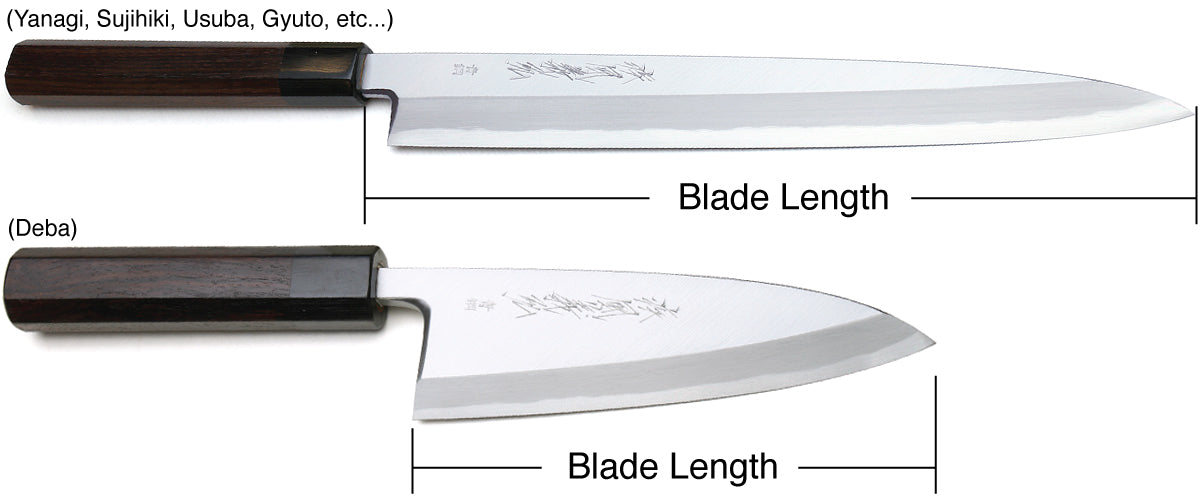About Japanese Knives

Knife Grades
Honyaki
Creating Honyaki is a long and arduous process. Due to its characteristically sharp hard edges the blade retain its sharpness for a long time,by the same token, these these knives take longer to sharpen, and in general, are more difficult to upkeep. Honyaki is preferred by most skilled professional chefs.
Kasumi
In contrast, Kasumi is easier to maintain. The blades on a Kasumi consist of two layers of metal forged together. The flat backside of the knife is made of hand durable. The front polished side is a softer steel, which simplifies the sharpening process. Although easier to care for Kasumi tend to dull more quickly.
Parts of Japanese Knives
It may be useful to know the parts of Japanese knives and their names. The illustration below shows the essential parts of a traditional Japanese knife.
1. Tip (切っ先 / KISSAKI).2.Blade Path (切り刃 / KIRIBA), the inclined surface of the entire blade starting from shinogi to edge.
3. Shinogi (しのぎ / SHINOGI), the ridge line.
4. Spine (みね / MINE), the top part of the blade.
5. Edge (刃先 / HASAKI), the entire cutting edge of the knife.
6. Heel (あご / AGO).
7. Machi (マチ / MACHI), is the notched neck portion.
8. Bolster (桂 / KATSURA), also known as ferrule.
9. Handle (柄 / E)
10. Butt (柄尻 /EJIRI), the end of the handle.

Blade Length
- The Yanagi, Usuba, and Gyuto are measured from the machi (macho) to the tip of the blade.
- The Deba and Mioroshi are measured from the heel (ago) to the tip of the blade.

